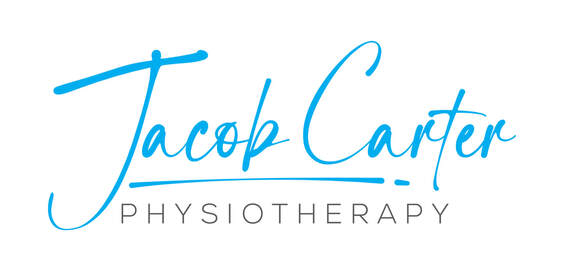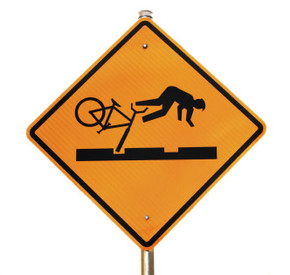|
The best form of treatment is prevention. Many of my clients fall victim to pain and dysfunction because they missed the warning signs. Warning Signs Signs (without symptoms) act as a warning that something bad is about to happen. When I assess movement in my clients (or when I assess my own movement to prevent injuries) I look for signs that are abnormal. To do this, I must know what normal is for athletes and non-athletes. For example, a non-athlete may expect to have glenohumeral (shoulder) external rotation of 80-90 degrees. A baseball player may have as much as 135 degrees on their throwing arm. Some examples of objective signs may include changes (over the last week(s) / month(s) / year(s) in: (1) Range of motion (ROM) Has there been a change in your active or passive ROM? Does the end-feel of the last few degrees of your ROM feel the same as it always has? (i.e. does it feel like a muscle stretch, bone-on-bone, tissue approximation? (2) Coordination Can you perform simple and complex movement skills as easily as before? Are your movements performed with precision? (3) Strength Have you noticed any changes in your ability to access your muscle strength, endurance or power? (4) Speed Are you able to move as quickly in different movement patterns as before? Do you fatigue more easily? (5) Symmetry Are you able to control the left side of your body as well as you are on the right? Do your movements look symmetrical on both sides when you perform them in front of a mirror? Some examples of subjective signs may include: (1) Lack of confidence Do you feel an incapability to execute the skill well? Does something just feel "off"? The skill may look well coordinated but may just feel uncoordinated. (2) Poor decision-making when performing a skill Are you able to make tactical decisions about using the skill? While performing a skill, are you able to make decisions regarding your environment to determine what your next course of action should be? (3) Inability to multitask Do you find it more difficult to talk (or do any number of other skill-sets) while you perform a skill? (4) Poor body language Do you feel awkward performing a skill that you used to be proficient in performing? Do other people seem to smile or chuckle while you perform the skill? (5) Validated outcome measures These outcome measures may help provide the patient with some insight into tasks they perform in their life that are difficult for them to do, even if they do not perceive symptoms to be present. This helps to create self-awareness. (Outcome measure examples include: Roland Morris Disability Questionnaire, Upper Extremity Functional Scale, Upper Extremity Functional Scale, etc.) Onset of Symptoms Once you develop symptoms (e.g. pain, stiffness, numbness, burning, tingling, etc.), we need to take it seriously. I am not implying that you need to take a month off of work, but conversely, the solution is not to ignore the pain and work through it. As always, the healthiest option is found somewhere in the middle. Your liberation from the symptoms will result from: (1) Determining the root cause of the injury. (2) Fixing the problem before permanent damage occurs. (3) Learning from it and becoming more aware of your body. (4) Developing more strength and coordination than before to prevent a similar injury from reoccurring. (5) Gradual return to the sports / activities you enjoy. Concluding Remarks The fundamental process to preventing injuries in your body is being self-aware and having others around you that can point out changes from your baseline. If these do not suffice, or you wish to have more guidance, many experienced physiotherapists are able to assess your movement and create a plan to mitigate your risk factors for future injury. Check out this post for more information on preventative physiotherapy.
2 Comments
|
Have you found these article to be informative, helpful, or enjoyable to read? If so, please visit my Facebook page by clicking HERE, or click the Like button below to be alerted of all new articles!
Author
Jacob Carter lives and works in Canmore, Alberta. He combines research evidence with clinical expertise to educate other healthcare professionals, athletes, and the general public on a variety of health topics. Archives
November 2022
Categories
All
|
|
|


 RSS Feed
RSS Feed